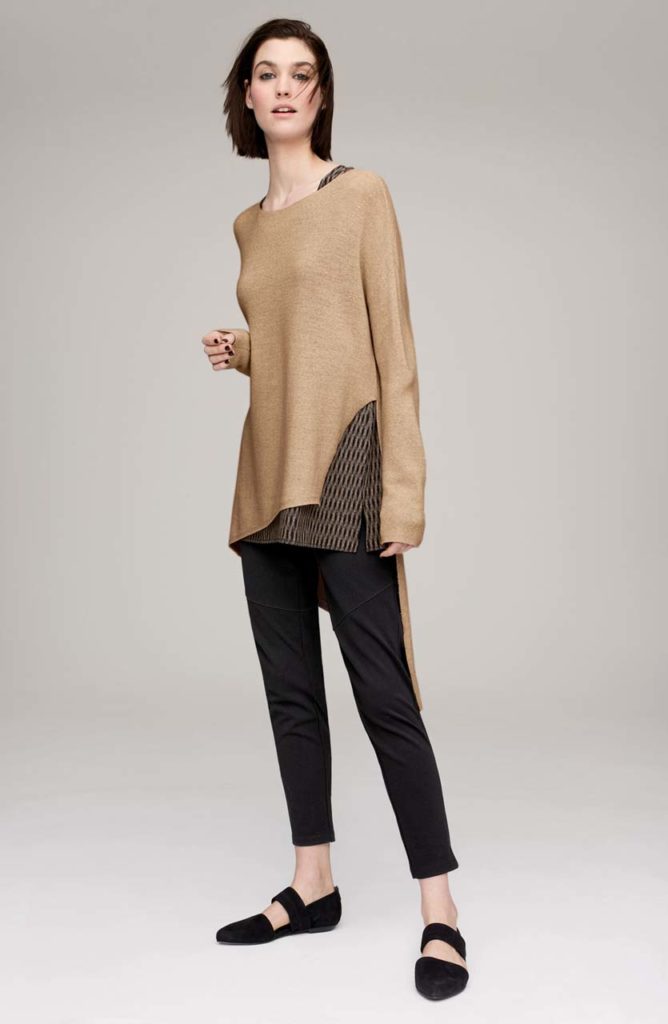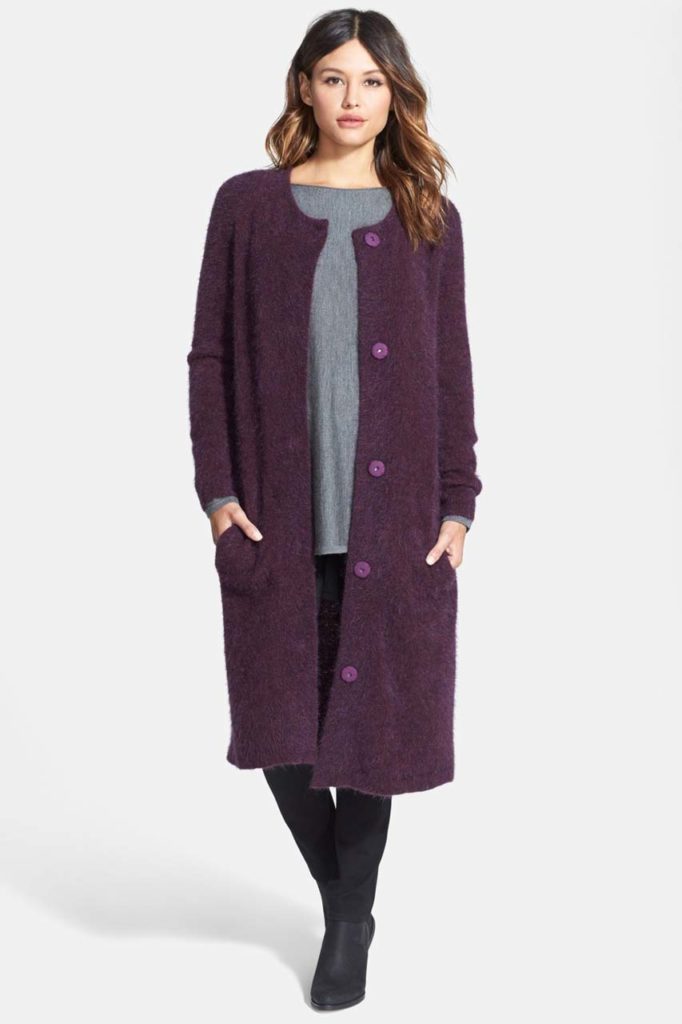How Eileen Fisher combined activism and style for a new generation of buyers
by Hunt Ethridge
From her earliest design days, Eileen Fisher had her eye on helming an eco conscious company. From the first, the 67 year old’s eponymous brand, established in 1984, has emphasized design simplicity, natural fibers, and durability, and in the process of embracing all three, grasped that “natural” didn’t necessarily mean biodegradable or safe for the environment. So, the former interior designer and graphic artist pivoted, and became an advocate and engine for socially conscious designing, fabricating, and selling.

Her company started from the kimono concept. In 1980, Fisher traveled to Japan while working on branding and logo design. While there, she became enamored of the full length traditional garment—one that has maintained its essential shape for more than a thousand years. It planted the thought that apparel should be both timeless and beautiful, with simple lines and natural colors and fabrics.
Twenty years ago, before the concept of organic came to the forefront, Fisher was sourcing organically grown cotton, long before research revealed how damaging conventional cotton growing was to the planet. Fifteen years ago, her company developed the role of Director of Social Consciousness, so as to be able to understand this aspect of the industry better and adapt its processes accordingly.
Since doing so, the company has aligned itself with Social Accountability International, which establishes standards for worldwide factories (developed in 1997, this auditable classification helps organizations develop, maintain, and apply socially acceptable practices in the workplace). In 2016, Eileen Fisher announced that it had become a Certified B Corporation, which requires meeting sustainability and environmental performance marks and having those marks be transparent to the public. Hers is the largest women’s fashion company (as well as the largest company in the state of New York) to acquire the certification.

In the ’80s and ’90s, Fisher’s brand geared itself towards what it termed a “less young” crowd, one that had serious careers, and as a result there developed a certain austere beauty to its loose and long garments. In the new millennium, styles changed again and began catering to young and thin, becoming more form fitting and less muted. Attracting millennials, the company discovered, required not only savvy design, but also doubling down on the activism that pervades much of that generation’s thought. So, three years ago, Fisher began its Vision 2020 campaign, with a goal of making all lines sustainable by the year 2020.
This has not been an easy road. For example, one of Fisher’s most popular fabrics, viscose, is a cellulose fiber and requires a toxic solvent for production. The company decided that it needed to completely eliminate it from their offerings. It still isn’t certain how that is going to be achieved fully, but between 2014 and 2015, viscose went from 90% of its regenerated fabrics to 77%. (Currently, the company is focusing on Tencel, a more sustainable wood pulp based fabric.)
Knowing that even if her brand met all of its ambitious goals, it would merely be a drop in the bucket if it couldn’t get buy in from the rest of the industry. Fisher appointed some top employees to become “sustainability ambassadors” to work with other companies and share knowledge and practices. She also understood that there needed to be a shift in the way consumers view apparel reuse, so, among other initiatives, it stated that if customers bring gently used Eileen Fisher clothes back and donate them to the store, they’ll receive a $5 gift certificate. The clothing then will be resold, helping combat the restless need for newness.

Eileen Fisher
eileenfisher.com